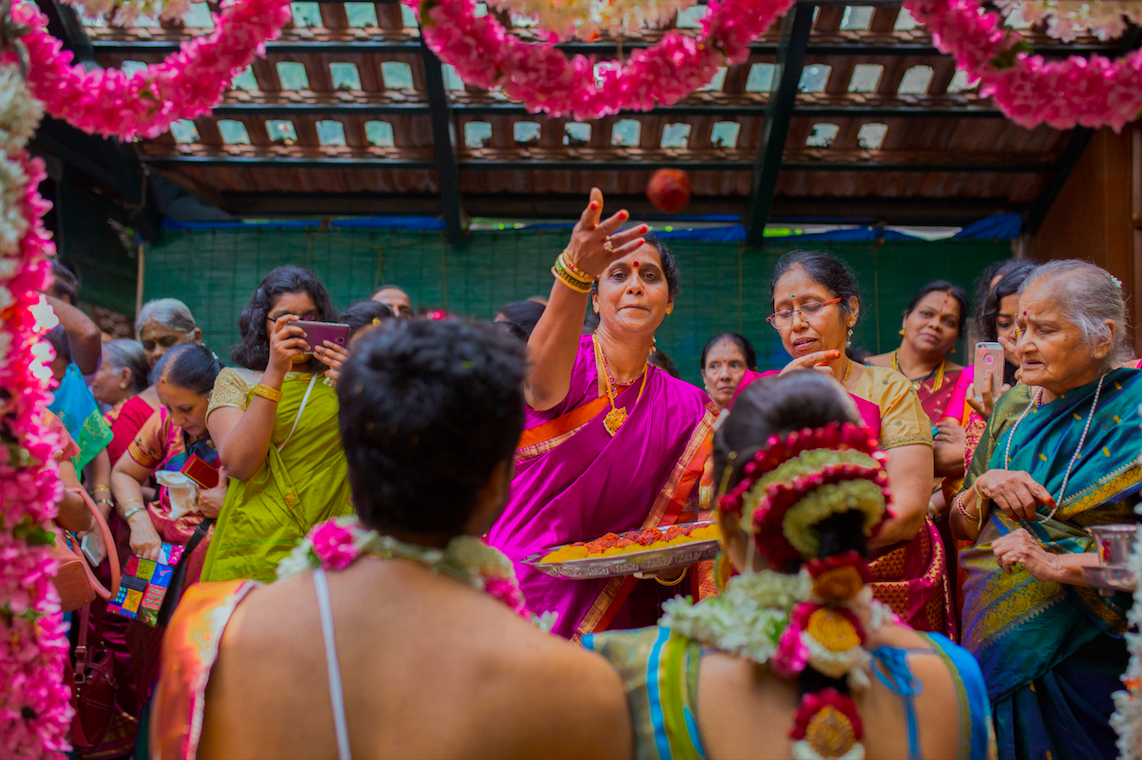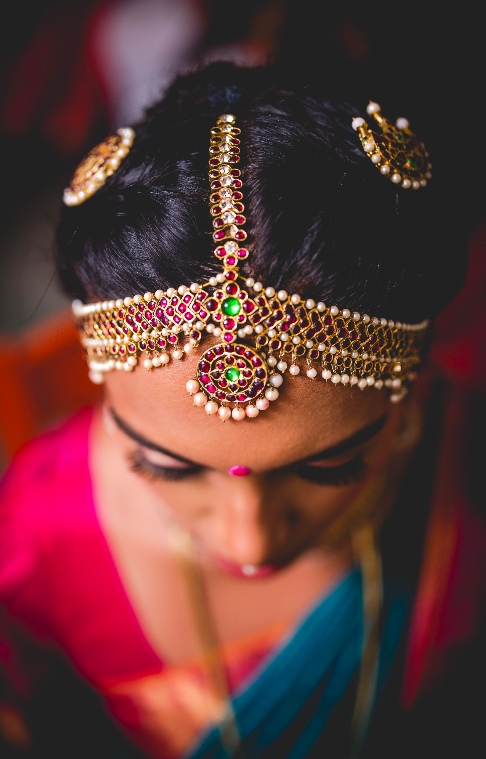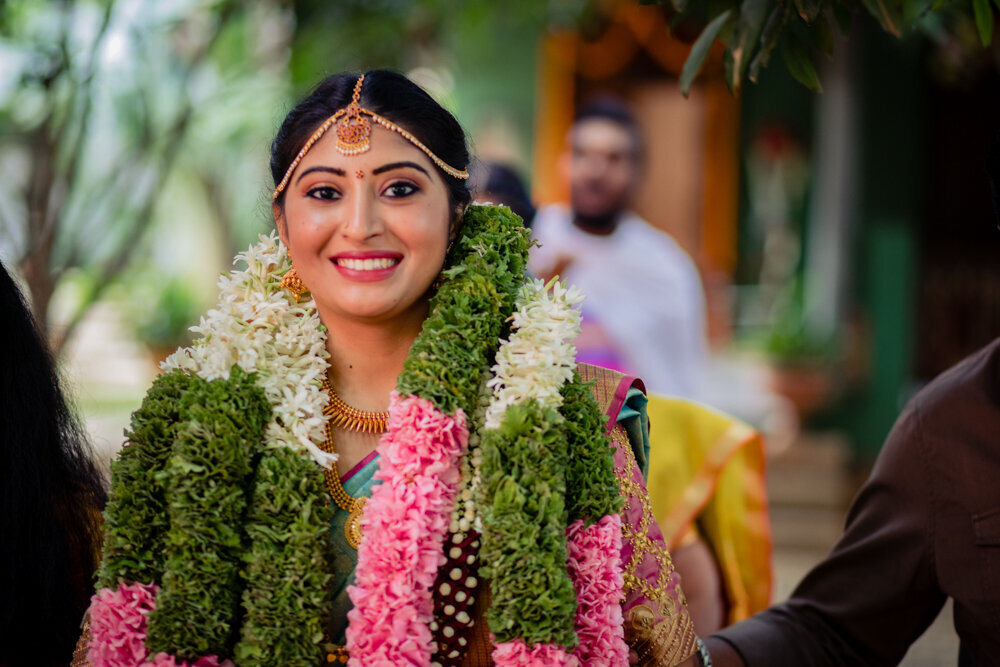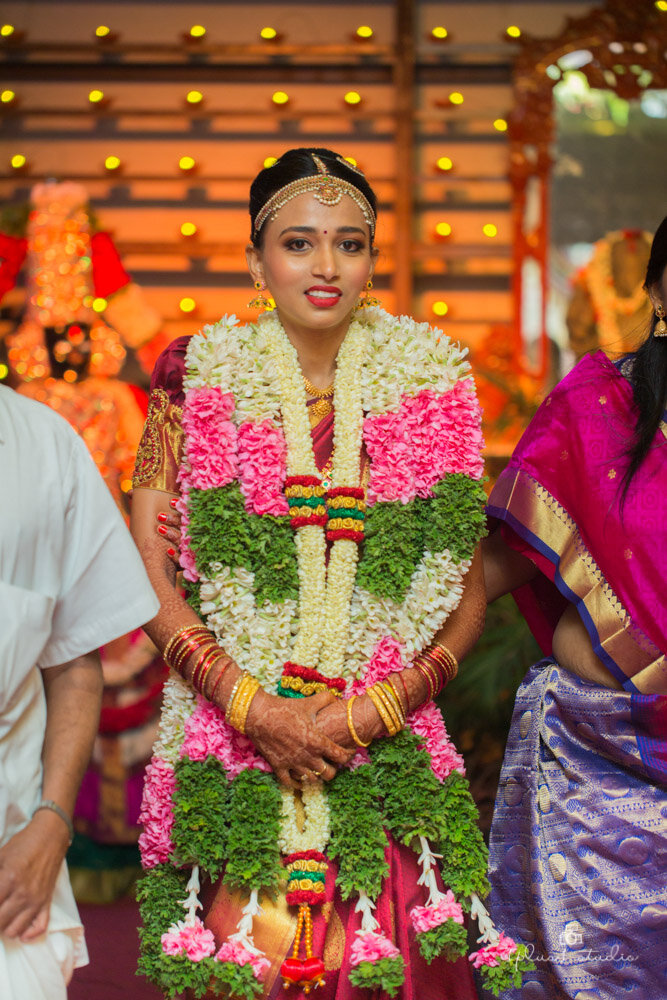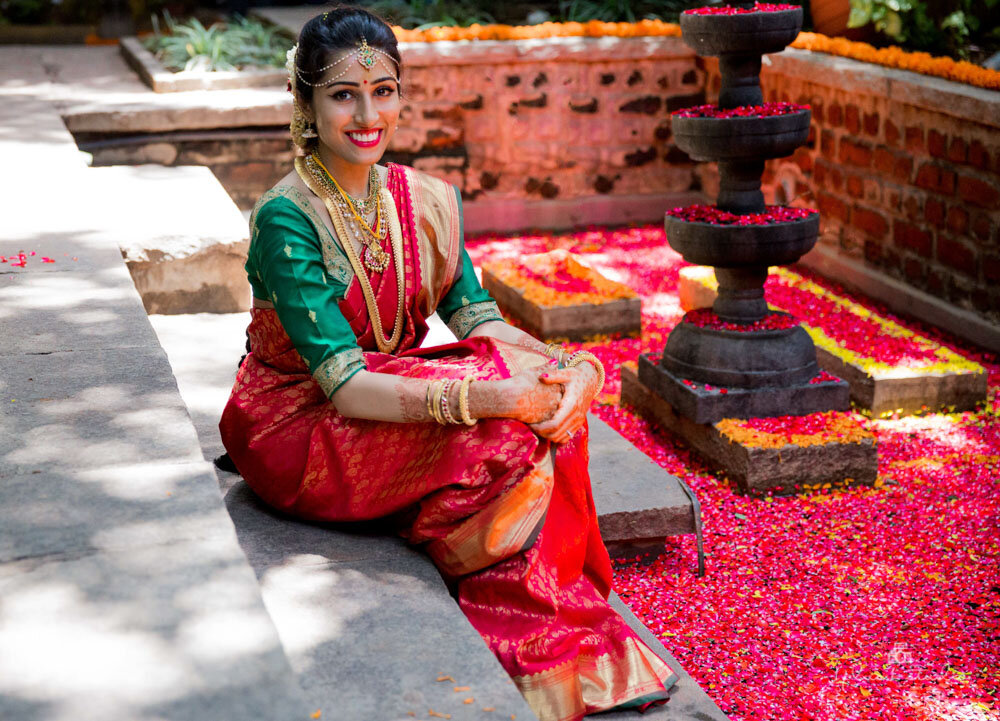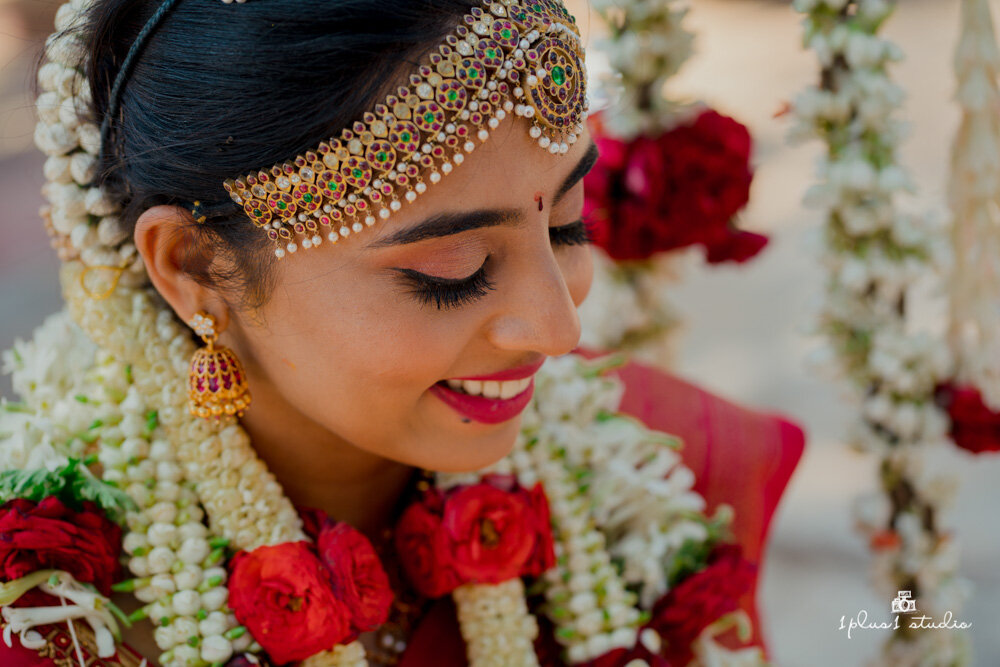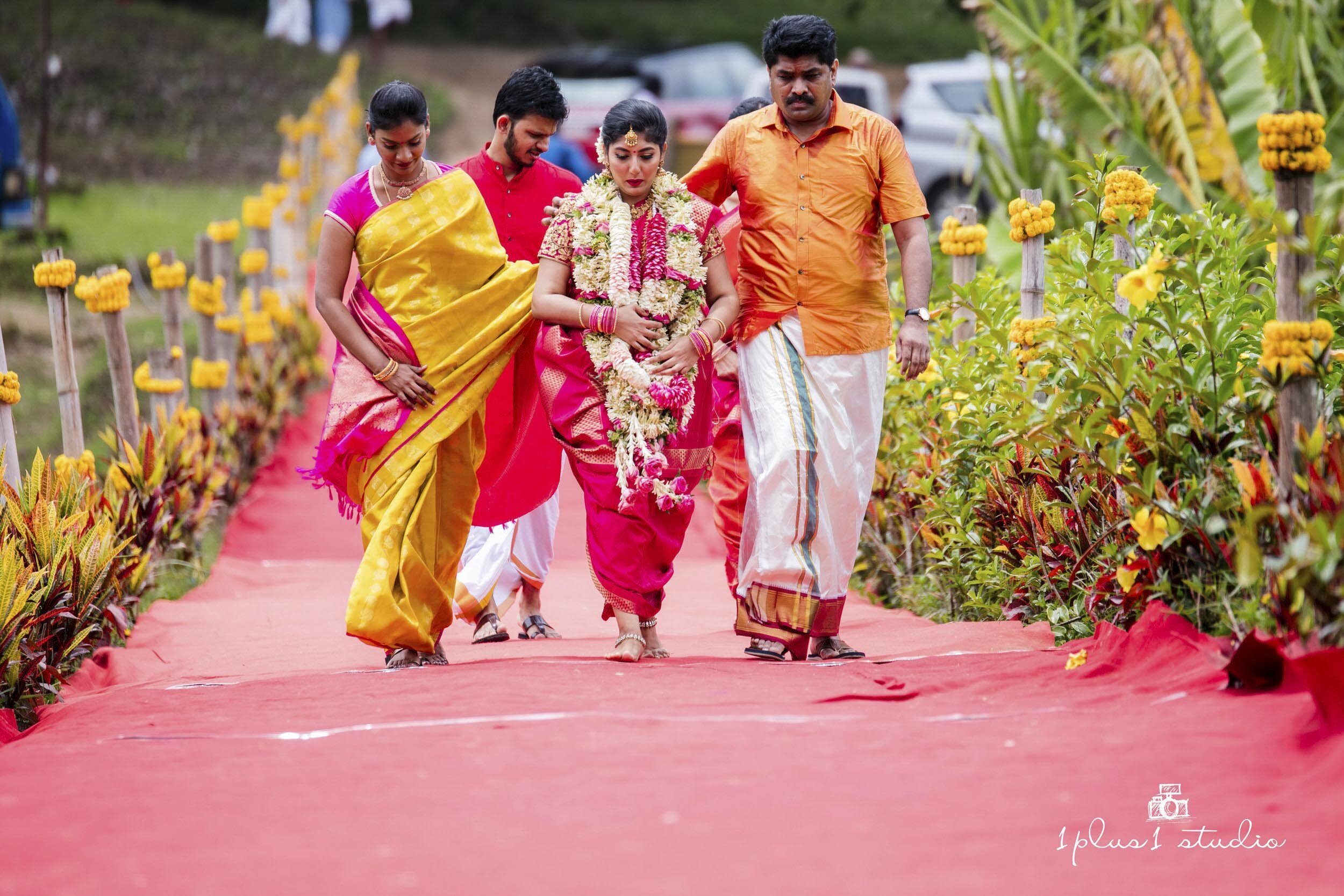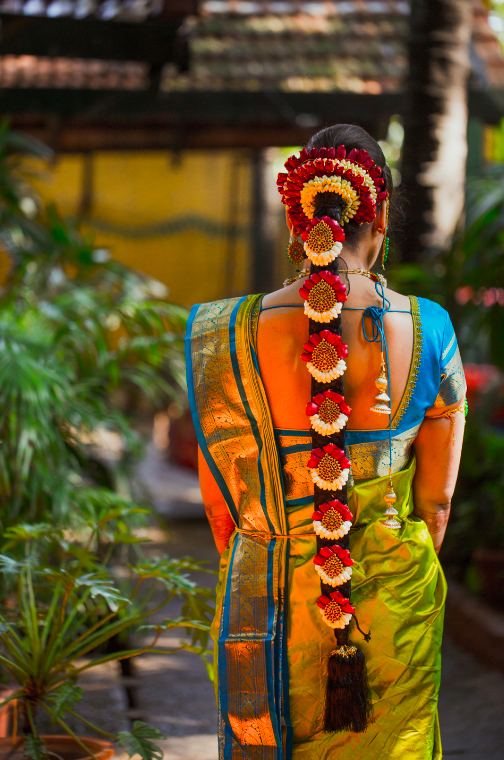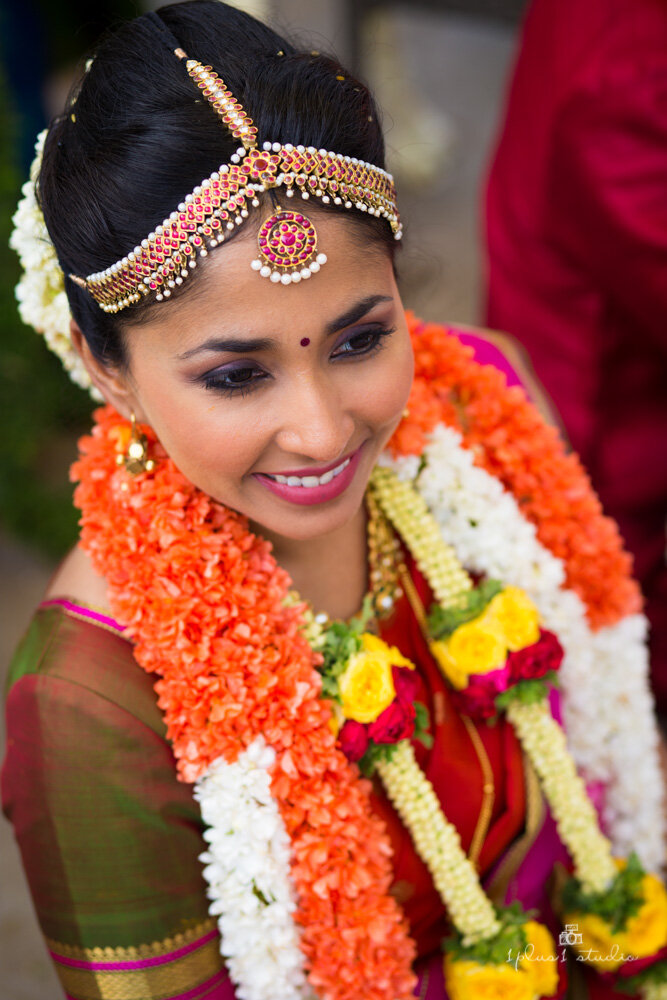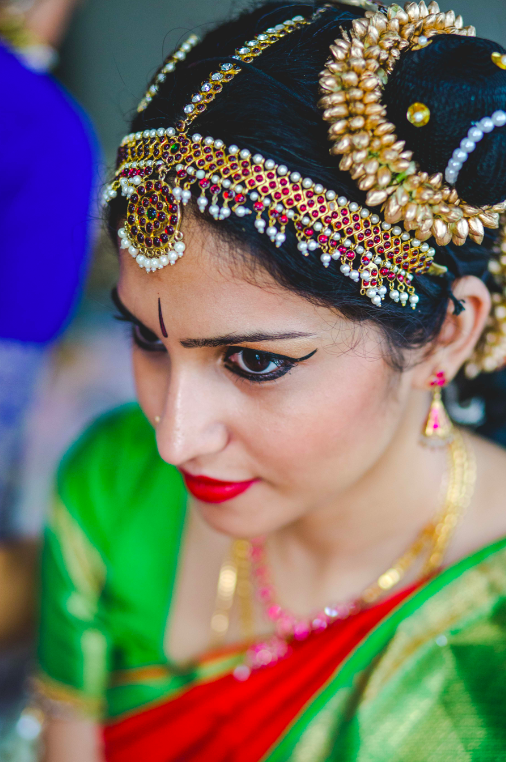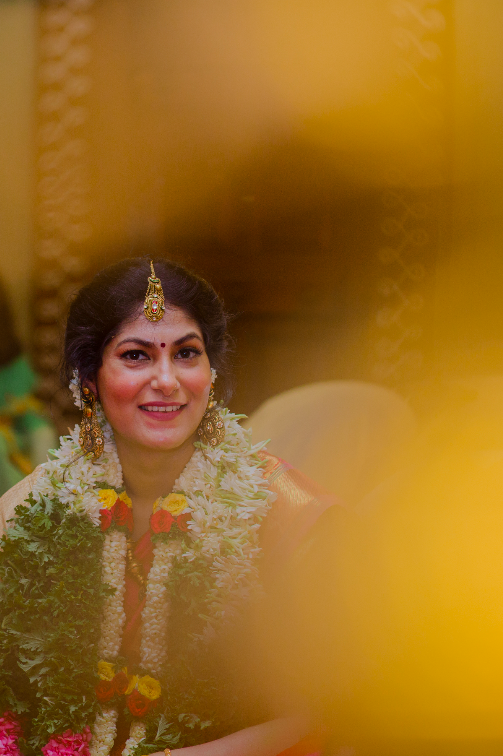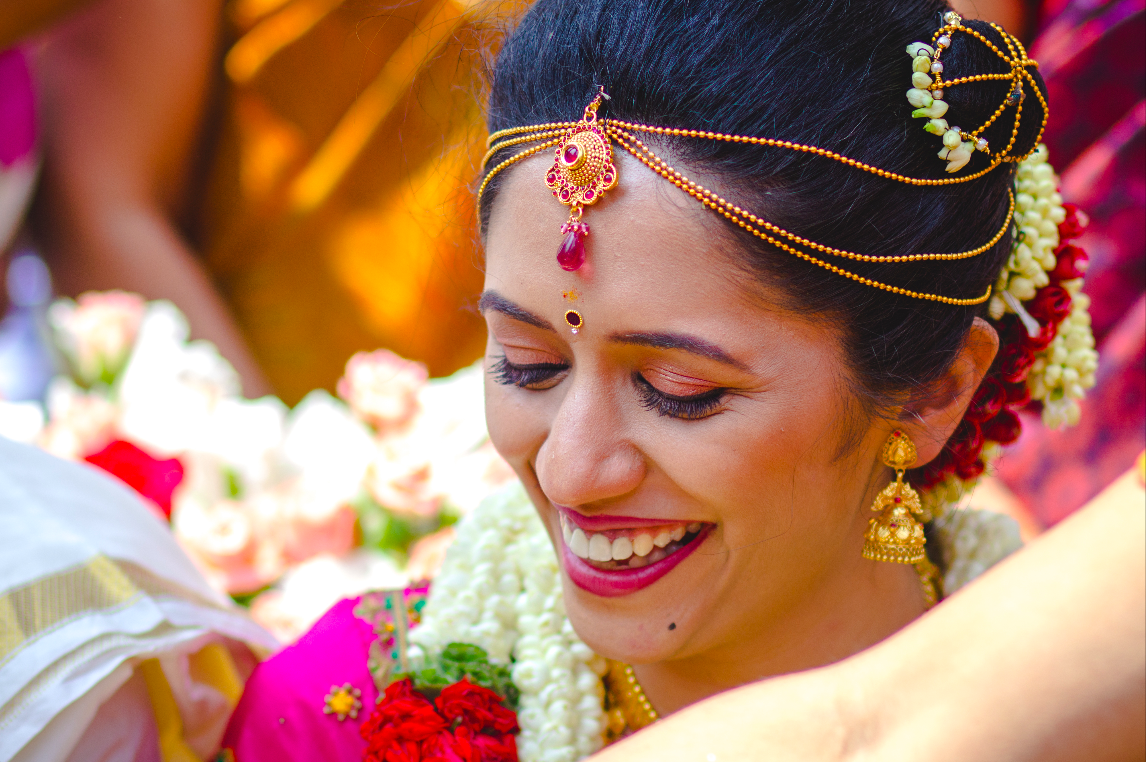TamBrahm Weddings: A Guide to Tamil Brahmin Wedding Rituals With Photos, Videos
What is a Tambrahm wedding?
Tambrahm Or Tamil Brahmin is a phrase used to refer to the Brahmins who trace their origin to Tamil Nadu. Tambrahm weddings in 2021 are now a mix of classic events like Oonjal, Kashi Yatra etc. and modern introductions like Mehndi and Sangeet.
The Tamil Brahmin wedding rituals are based on the four Vedas - Rig, Yajur, Sama and Atharva. Some prefer to give a modern touch to the rituals to make them more relatable. Unlike other weddings, for Tamilians, the spiritual symbolism of each ritual remains the most important. It may not be all pomp and circumstance, but it surely is personal.
"Maangalyam thanthunaanaena mama jeevitha haethunaa kanttae bathnaami supahae sanjeeva sarasa satham..."
Recited by the groom during the important Mangalya Dhaaranam ritual of a Tamil Brahmin wedding, the mantra translates to "This yellow rope is managala suthram, a source of longevity. I shall now tie this rope in your neck. I pray you live happily for a hundred years." It symbolises the union of two souls, the beginning of the Grihastha ashrama of a person's life.
Indian weddings are known for their grandeur and vibrance. Tamil Brahmin weddings, especially hold a special place because of their meaningful rituals and ceremonies that bring two families together. We’ve put together a guide to Tamil Brahmin Weddings below. It includes Tambrahm Wedding Rituals, Tamil Brahmin Photography, Wedding Videos & Wedding Films and more!
Tamil Brahmin Wedding Rituals
There are different Tamil Brahmins groups - Iyers, Iyengars and Gurukkal. Many of the rituals are performed by all while some might be unique to only one sect.
NICHAYATHARTHAM
The Nichayathartham is an engagement ceremony where the bride and the groom exchange rings on a day that is auspicious and agreed upon by their families. This is also the day when the date and time for the wedding are set (Muhuratam) by a priest who reads the Lagna Patrika. This Lagna Patrika contains all the information about both the families (their ancestors, family name etc.). The families also conduct a Ganesh pooja to invoke the Lord's blessings and exchange gifts.
PALIGAI
Symbolic to fertility for the bride and a blessing for their descendants, the bride's and the groom's families sow seeds in the soil. These seeds are then sprinkled with water and milk by married women.
Jaanavasam
This is the grand procession of the groom's party when they arrive at the mandapam for the wedding. Traditionally, the instrument of nadaswaram is played. The wedding party is welcome by the bride's family and gifts are exchanged. Later on, the bride and the groom visit a nearby temple to seek blessings.
Vratham
There are four ashrams in a Hindu's life - Brahmacharya, Grihastha, Vanaprastha and Sanyasa. In this ritual, the groom seeks permission from his father to enter the next ashram of his life and break his Brahmacharya. Chanting of the mantras take place in which the bride and the groom both participate. As a mark of protection, a Rakha or Kaapu is tied on their wrists.
Kashi Yatra
A dramatic ritual that is very intriguing is Kashi Yatra or Kasi Yatrai. The father of the bride stops the groom who is on his way to Kashi to learn more about religion and spirituality. But when the father of the bride offers her hand to him, he stops and returns to the mandapam to get married!
Maalai Maatral
The bride and groom exchange garlands overseen by their respective maternal uncles, an important figure in the hierarchy of a Hindu Family. In the Indian tradition, a garland worn by an individual is generally not worn by another. By making an exception to the rule , the unification of two souls and oneness of the couple brought together by matrimony are highlighted.
Oonjal
Oonjal literally translates to a 'swing'. After they exchange flower garlands, they sit on a swing . The swing symbolises the vicissitudes of life which the couple is expected to face and cope with, in perfect harmony. Some families may prefer to sing traditional songs during this ceremony.
Pidi Suthal
Five or Seven aunts with living husbands bless the couple by waving balls of white, red & yellow rice and depositing them in North, South, East and West directions. The planets and gods representing these directions are thereby propitiated. Pouring water and carrying a lighted lamp around the couple are part of the ceremony.
Kannikadhanam
In this ritual, the bride sits on the lap of her father and is showered with gifts and blessings. This happens before the couple tie the knot where the priest places a yoke denoting harmony and coordination on the head of the bride upon a sacred grass and the Gold Mangalyam. Water is poured amidst chanting of hymns, praying for her happiness and prosperity.
Mangalyadharanam
The tying of the Mangal Sutra or Thali takes place at an auspicious hour. The groom ties the mangalsutra around the neck of the bride while the Nadaswaram and other instruments are played loudly to suppress any inauspicious sounds or conversations. This is called “Getting Melam”. A turmeric thread is also tied around the bride’s neck with three knots.
Paanigrahanam
The groom holds the hand of the bride amidst chanting of hymns conveying that the Gods have ordained that they live as man and wife without parting and that the groom leads the life of a householder.
Saptapadi
Hand in hand, the groom and bride take seven steps. It signifies the wholeness of the institution of marriage. The chants indicate that each step signifies the essentials of a harmonious life viz, food, strength, wealth and prosperity, love and affection, progeny, opportune time and lasting friendship.
Ammi Midithal
The bride is made to step on a grinding stone which signifies that the bride’s mind should be rock-like, unperturbed by the trials and tribulations of life.
ARUNDHATI Nakshatram
The groom shows the bride the double stars of Vashista and Arundhati as an ideal couple, symbolic of marital fulfilment and loyalty. The couples are asked to look up the constellation symbolizing conjugal love and affection
NALANGU
An after-wedding ritual, Nalangu is a fun activity done majorly to help the bride and the groom talk and break the ice. Games are played, songs are sung, legs are pulled. This is an activity that is relaxing for everyone.
Tamil Brahmin Wedding Albums
Click on one of the below links to see a complete Tambrahm wedding with photos and videos.
A Colourful Tamil Brahmin Wedding At Tamarind Tree, Bangalore
A Destination Tambrahm Wedding at the Capitol Village Resort, Coorg
An Intimate Iyengar Tamil Brahmin Wedding With All Rituals At a Farm House, Bangalore
A Fun-Filled Tamil Wedding at the Moongate Events Venue, Bangalore
the Tambrahm bride
Tambrahm Wedding Videos & Songs
Tamil Brahmin Wedding Videos are vibrant, full of traditional rituals and a lot of family fun. We’ll keep adding both Iyer and Iyer Wedding Videos to the below Youtube playlist.
When Are Tamil Brahmin Wedding Usually Held?
Usually held over a period of two days (may extend to four days), the dates for a Tamil Brahmin wedding are decided by a pundit by matching the horoscopes of the bride and the groom. Tamil weddings are avoided in the Marghazhi (Dec 15th to Jan 15th), Aadi (July 15th to Aug 15th) and the Purattaasi (Sep 15th to Oct 15th) periods.
Living Happily Ever After!
After the wedding, sometimes if the bride and groom wish, a grand reception is held that has Carnatic music and traditional farewell gifts like coconuts, flowers and thamboolam (fruits, kumkum, betel leaves and areca nuts).
All of this together results in the creation of a memorable wedding that the bride and groom remember forever.








